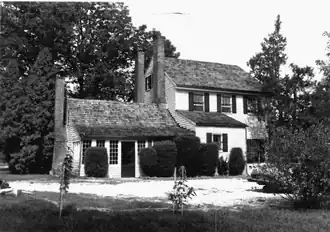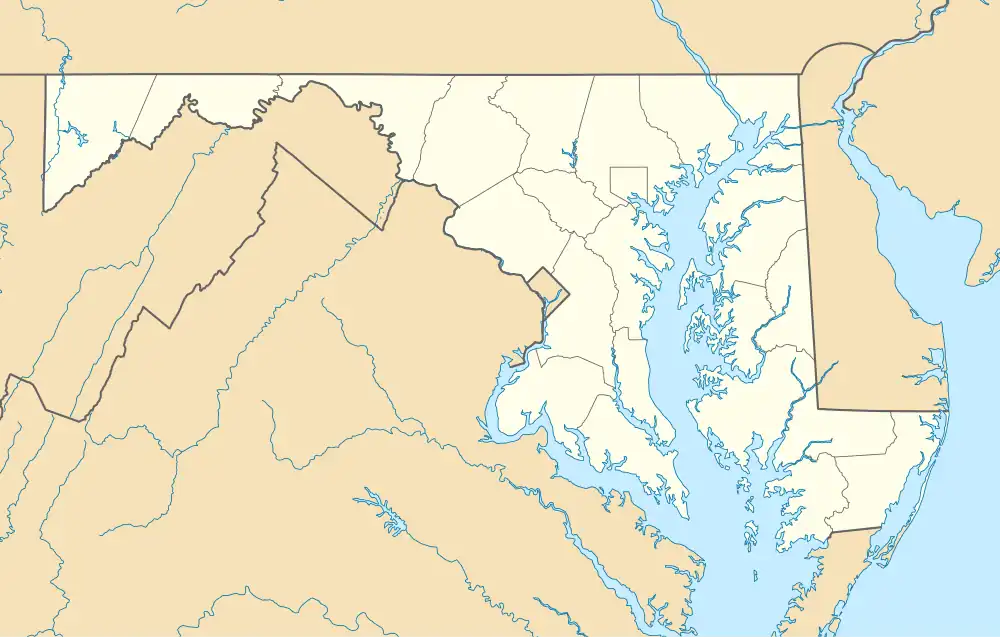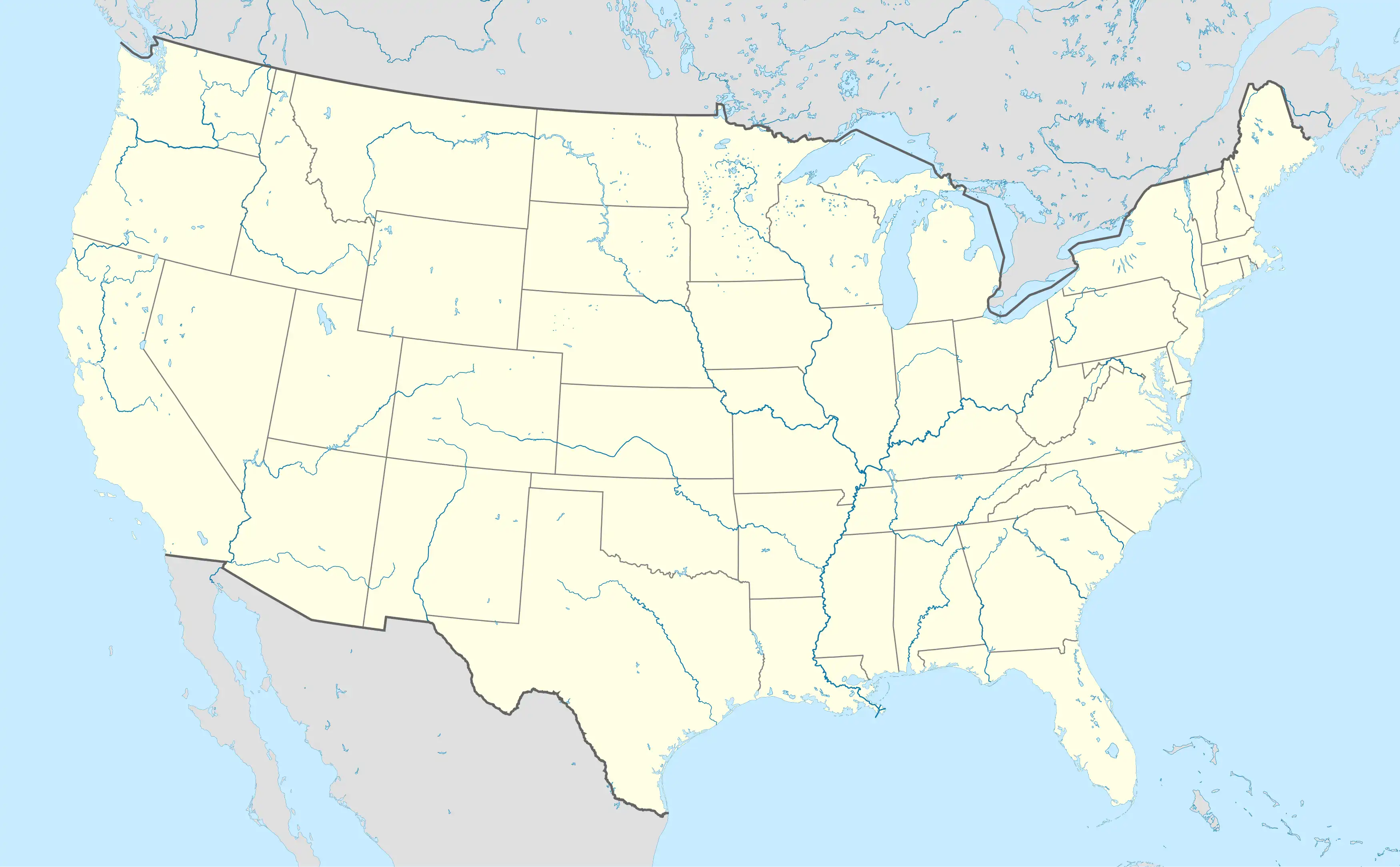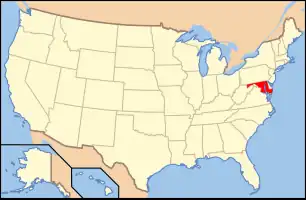Bellevue (Accokeek, Maryland)
Bellevue | |
 | |
  | |
| Location | 315 Farmhouse Road (formerly 200 Manning Road East), Accokeek, Maryland |
|---|---|
| Coordinates | 38°39′41″N 77°0′5″W / 38.66139°N 77.00139°W |
| Built | 1840 |
| NRHP reference No. | 86001738 [1] |
| Added to NRHP | August 21, 1986 |
Bellevue is a historic plantation house located at 200 Manning Road East, in Accokeek, Prince George's County, Maryland, United States. This Greek Revival style home was constructed in about 1840. It is one of only three surviving examples in Prince George's County of the once-popular Tidewater house style, typical of small plantations of that period. Bellevue is in excellent condition, and retains its freestanding chimneys with brick pent, as well as a roughly contemporary kitchen wing. The house stands on a five-acre, partially wooded lot which exemplifies its original plantation setting.[2]
Bellevue was listed on the National Register of Historic Places in 1986.[1]
References
- ^ a b "National Register Information System". National Register of Historic Places. National Park Service. April 15, 2008.
- ^ Susan G. Pearl (January 1986). "National Register of Historic Places Registration: Bellevue" (PDF). Maryland Historical Trust. Retrieved August 1, 2015.
External links
- Bellevue, Prince George's County, including photo in 1985, at Maryland Historical Trust website
Slavery
Bellevue was part of a tobacco plantation landscape in southern Prince George’s County during the first half of the 19th century. Contemporary and later descriptions identify the property as a "tobacco plantation," with the present house built c. 1840 for planter John H. Hardisty.[1][2]
Like other plantations in the county, Bellevue’s agricultural operations would have relied on enslaved labor before Maryland’s 1864 abolition of slavery. County planning and historical studies note that Prince George’s County had one of the largest enslaved populations in Maryland, and that enslaved people’s housing, work spaces, and burial areas were integral but often poorly documented parts of plantation complexes.[3]
Names and counts of enslaved people connected to plantations in Prince George’s County are commonly documented in the 1850 and 1860 federal slave schedules, which list slaveholders by name at the election-district level (the schedules do not usually name enslaved people). Researchers seeking to identify enslaved people associated with Bellevue during the Hardisty period can consult those schedules and related records compiled by the Maryland State Archives and regional databases.[4]
Burials
Countywide scholarship on plantation sites observes that enslaved burials were frequently placed in marginal areas of the landscape and are often unmarked or marked with perishable materials, making them difficult to locate today. Archaeological syntheses for Prince George’s County describe unmarked cemeteries, occasional use of simple fieldstones, and the rarity of durable markers prior to emancipation.[5] While a specific enslaved burial ground at Bellevue has not yet been documented in published sources, the property context matches regional patterns that warrant further investigation.
Historical features
A large engraved marble block bearing the surname "MUDD" was discovered on the Bellevue property. Local accounts suggest that the Mudd family, including Dr. Samuel Mudd, who lived nearby, may have had ties to the stone. It is speculated that tombstones or memorial stones may have been produced on or near the property, though this has not been verified in published sources.
- ^ "Bellevue". Maryland Historical Trust. Retrieved August 15, 2025.
- ^ Flynn, Sean (October 14, 2016). "Built on a plantation, Prince George's home is steeped in centuries of history". The Washington Post. Retrieved August 15, 2025.
- ^ "Historic Agricultural Resources of Prince George's County, Maryland". Maryland-National Capital Park and Planning Commission. Retrieved August 15, 2025.
- ^ "Legacy of Slavery in Maryland". Maryland State Archives. Retrieved August 15, 2025.
- ^ "African American Cemeteries in Prince George's County, Maryland". Maryland-National Capital Park and Planning Commission. Retrieved August 15, 2025.

